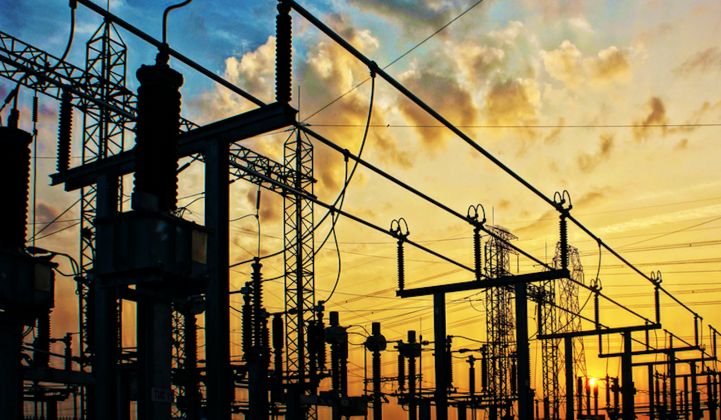Distribution grids around the world tend to operate in relative darkness, in terms of lacking sensors and monitors to reveal their point-to-point and moment-to-moment condition to their operators. But that may have to change as distributed energy resources take up an increasing role in powering them.
That’s the context for recent findings from grid technology developer Depsys, which revealed gaps in the visibility its customers have into their distribution grids. “More than 50 percent of customers discovered critical points in their networks they were previously unaware of, including loading, voltage and power quality issues,” said the Swiss company in a press release.
The critical points — locations on the distribution network subject to issues such as high voltage and loading — do not imply an immediate threat to the grid. But they do highlight the need for caution when adding assets such as PV, Depsys Chief Commercial Officer Anja Langer Jacquin told GTM.
The findings emerged from a free grid-health check offered to customers using the company’s GridEye monitoring systems. The company serves around 40 distribution system operators (DSOs) in Europe and Asia, with a particular focus on Switzerland and Germany.
Depsys started rolling out the health check as a quarterly service at the start of this year. The critical points finding relates to its latest health check, which covered 80 percent of its customer base.
“It doesn’t mean that 50 percent have a grid that’s about to break forever,” Langer Jacquin said in an interview. “Nowhere in Western Europe will the grid fall over tomorrow. We have over-dimensioned [the grid] in the past decade.”
Instead, “it’s about having specific locations that there is an issue that they have to address either very shortly or within the medium term because it will become close to posing a risk.”
Defining the value of tech to reveal missing grid data
Findings like these aren’t necessarily unexpected. In fact, they’ve often been revealed as utilities have deployed smart meters, distribution grid sensors and other data collection points onto previously unmonitored networks.
That’s been the case in the United States, where utilities rely far more on radial overhead distribution systems, with far less redundancy than the underground networked distribution systems common in Europe.
Companies providing technology designed to offer visibility and control over distribution grids often point to these gaps as justification for expanding deployments. But utilities also have to contend with the question of whether the values derived from gaining this visibility are worth the cost of the technology that delivers it.
Jon Slowe, director of energy consultancy Delta-EE, noted in an email that Depsys is “looking to provide a solution into this market, so they want to [emphasize] the problems. Overall reliability is very strong in European networks.”
However, he added: “The pressures on networks are increasing. More and more generation is being and will be connected to networks. And as electrification increases, so will the capacity demands. There will be many bottlenecks in the future from these two challenges.”
Solar PV in particular can cause problems on distribution systems designed for one-way power flows by causing voltage disruptions or tripping protective equipment. Electric vehicle chargers can add significant loads to circuits not designed to handle them, as can electrifying loads that now run on fossil fuels.
To manage this shift, network investments will need to increase substantially over the next decade, covering not only traditional grid reinforcement but also “smart solutions,” such as demand-side flexibility, Slowe said.
Dave Openshaw, a Delta-EE associate, added: “Contextualization is all-important. Whilst voltage, loading [and] power quality are critical parameters, it doesn't mean that the electricity systems are about to fall over. Rather, it means that these are parameters that will require increasing attention by DSOs as the low-carbon transition progresses.”
Distributed energy drives need for network visibility
Langer Jacquin said Depsys expects to uncover further critical points as monitoring expands. “This is not an outlier,” she said. In fact, the 50 percent level is likely to be an underestimate, since Depsys’ customers have not deployed monitoring technology across their entire networks.
At the same time, the analysis also uncovered areas where the grid had extra capacity that could be valuable for future energy system planning.
Overall, Depsys’ findings highlighted the need for better grid data to improve planning for distributed generation and electric vehicle charging, she said. Grid investments are typically over-dimensioned “based on worst-case scenarios, to be on the safe side.”
“Now we’re finding that the pressure on the grid is not equally spread everywhere, so we have to be much more surgical about where we put our investments. The discovering of where you can do more is potentially just as important as when you discover that you can’t.”
Only about 5 percent to 10 percent of European grids today are able to monitor power quality at the substation or cabinet level, Langer Jacquin estimated.
This could hamper attempts to cost-effectively adapt grids to low-carbon, decentralized energy markets. Without intelligence, grid planners will not be able to foretell the impact of adding new assets onto the system and so would have to overinvest in all areas of the network.
In contrast, Depsys estimates that monitoring could improve grid efficiency and reduce emissions by helping to optimize energy routing. In 2018, the company calculated that its GridEye systems could improve the energy efficiency of the Swiss grid by nearly a factor of 6, rising to 7 if the technology was used for control as well.
The company makes a persuasive argument for greater grid intelligence. Whether DSOs agree to the need, and how exactly they choose to address it, remains an open question.




